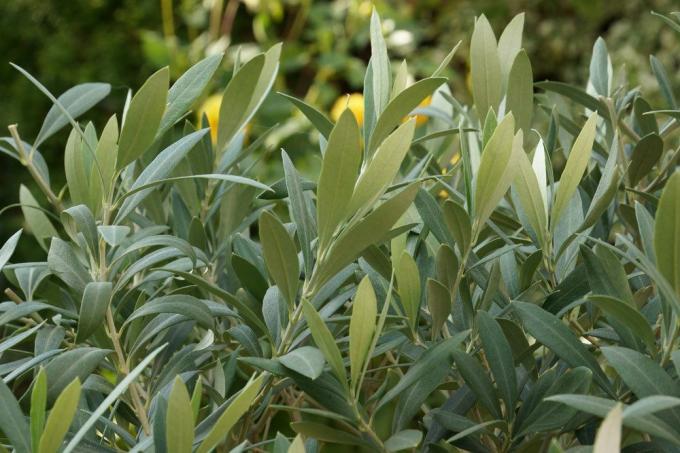
table of contents
- origin
- Overwinter
- In the dark
- Winter quarters
- Winter care
- Cut
- Pests
- After hibernation
- Toxicity
Olive trees give our terraces or balconies a Mediterranean flair. They bring us a piece of vacation home. In summer, during the open-air season, olive trees do not make any special demands on care. However, if the wet and cold season arrives in this country, the Mediterranean friends should move to their winter quarters in the apartment after the first frost at the latest. Since the Olive tree Has trouble with the dark and cold season, he needs a special place so that he feels comfortable.
origin
Origin and climate
Olive trees come from the Middle East, South Africa and of course the Mediterranean area. Nothing is more typical in Spain or Italy than an olive tree. That is why it is an important part of the cultural landscape in these regions. Olive trees grow best at an average temperature of 15 to 20 degrees Celsius. These permanently warm temperatures cannot be offered to the olive tree in this country. That is why it winters either protected outdoors or in the apartment.
Overwinter
Wintering as a container plant
We cultivate olive trees as container plants. In spring and summer, the Mediterranean plants can enjoy the German summer. They also need the open-air season, because olive trees only survive in extremely rare cases when they are kept purely as houseplant. When autumn comes and the temperatures drop, the open-air season for the olive tree ends. So the plant must be brought inside before the first frost if possible.
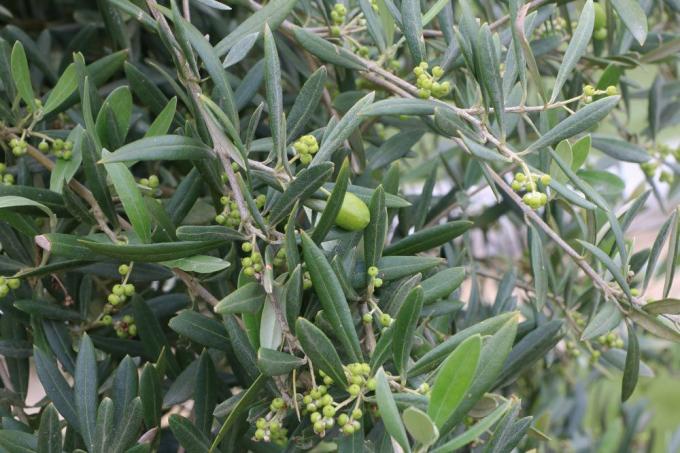
If the first frost is overlooked, don't worry, older olive trees can survive a night of light frost. With very young olive trees, however, you should be very vigilant about frost. They are not yet as hardened as their older colleagues.
Tip: Even if it is difficult to watch out for the first frost, the olive trees should remain outdoors as long as possible.
In the dark
Winter in the dark
If there is no light and cool place for the olive tree in the apartment, it can also overwinter in the dark. However, this should only be seen as a stopgap solution, the olive tree will not survive a dark wintering for several years. During a dark winter, the tree sheds its leaves. That is why the watering needs to be reduced even more. If the plant has survived the hibernation well, it should sprout again in spring, when it comes to light again.
Tip: In this case, get used to the light slowly. A stopover in the apartment before going outside again is ideal for this.
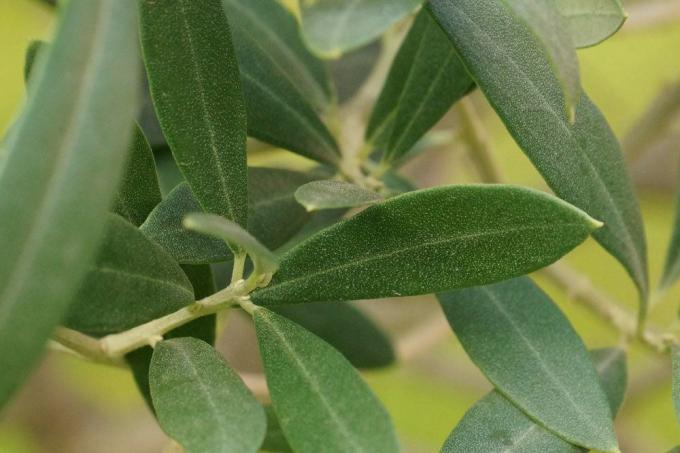
Winter quarters
Olive trees do not tolerate warm temperatures during winter. Therefore, a normally heated living space is not a good winter quarters for the plants.
A room is optimal:
- with temperatures around 10 degrees Celsius
- with a lot of brightness
Unheated winter gardens or cool bedrooms are suitable as winter locations for the olive tree. The latter, of course, only if they are bright enough, or you can support the olive tree with a special plant lamp. Since pests like to nestle in during the winter, the winter quarters must be ventilated regularly. This prevents pest infestation.
Tip: If there is no suitable space available within the apartment, the olive tree can also overwinter in the bright hallway.
Winter care
Olive trees are among the undemanding and easy-care plants. Nevertheless, they cannot do completely without care during the winter. In addition, winter care should not start suddenly. Therefore, the plant should be prepared for wintering in late summer, depending on the weather.
- Moderately reduce watering
- Slowly increase the casting intervals
- Stop fertilizing
For the plant, these measures mean that a barren time will come and it should stop growing in order to save energy. If the olive tree is drastically converted to winter care overnight, it will give you the cold shoulder and shed its leaves.
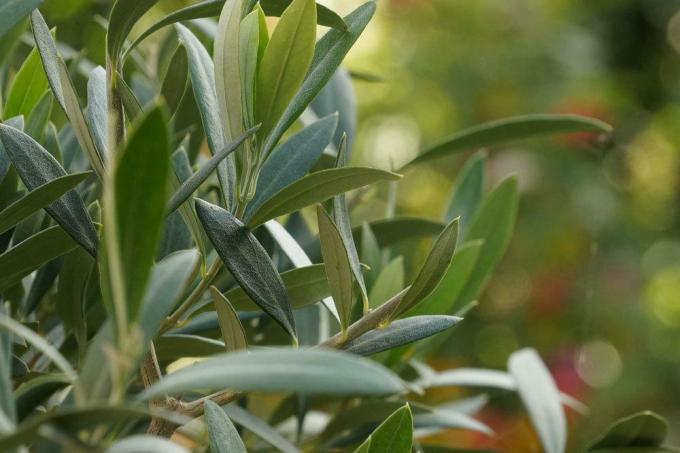
Once the olive tree has moved, it needs little water during the winter months. The following applies: the darker the room, the less water is given. Under no circumstances should the earth become too wet or waterlogged. This usually causes the roots to rot and the tree to lose all of its leaves.
You can avoid waterlogging by:
- create a drainage layer in the bucket
- only use planters with drainage holes
The following materials are suitable for the drainage layer:
- Pottery shards of old flower pots that have been cleaned well beforehand
- gravel
- Gravel mixed with sand
Tip: Excess irrigation water that collects in the saucer is also counted as waterlogging.
Cut
Since olive trees grow very slowly, there is no need to cut them. However, you can remove dead wood before moving to winter quarters. Do not cut the tree in the process. Closing the wounds is an additional effort for the olive, which is supposed to adapt to barren conditions.

Pests
Olive trees are rarely attacked by pests during the outdoor season. However, pests are more common in winter. The causes often lie in the care provided. The typical pests that nest on the plants in winter include.
- Scale and mealybugs
- Spider mites
- Aphids
Scale and mealybugs
These plant lice love the warmth. You should therefore make sure that the olive is kept cool during the winter at 10 degrees Celsius. As a preventive measure, you can expose older olive trees to light frost overnight, which the pests, unlike the plant, cannot survive.
Spider mites
These annoying pests settle on the underside of the leaf and create a white web as the infestation progresses. Spider mites particularly like drought. Regardless of whether it is dry room air or dry earth, they infest the plant almost overnight. Spider mites, on the other hand, do not like and tolerate moisture at all. So if an infestation occurs, then, as an exception, pour the olive tree more vigorously and put it under a light-colored plastic cover for one or two days.

Aphids
Aphids can be found on the underside of the leaf. If the infestation is already well advanced, you have to cut off the infected parts of the plant. If you discover aphids before they have formed colonies, you can also spray the sapling with nettle stock.
Tip: If pests have attacked the olive tree, they isolate it from other plants. Because the pests quickly spread to neighboring plants.
After hibernation
After wintering
If the outdoor temperatures rise again to 12 degrees Celsius, the outdoor season for the olive tree begins again. Make sure that there are no more night frosts. In our latitudes this is usually the case after the ice saints. Since the olive tree should be allowed to spend as long as possible outdoors, it can be put outside as early as April. If there is unexpected frost, it can survive a night outdoors. If the frosts are persistent in April, he must be brought back into the apartment overnight.
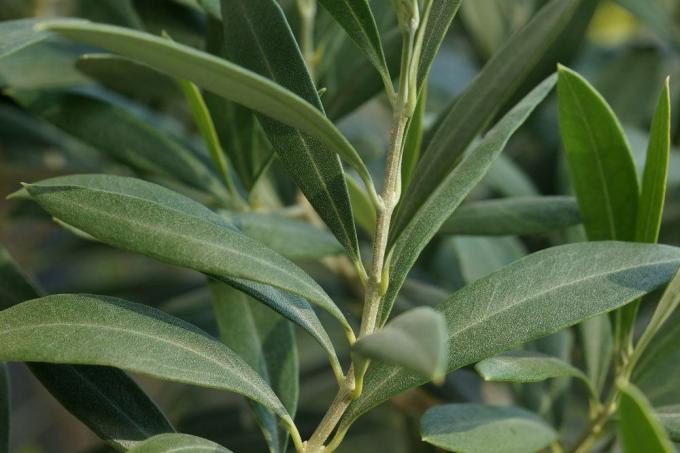
Tip: The olive tree does not like a constant back and forth between winter quarters and balcony or terrace. If it has to be brought into the apartment for your own protection, it is best to place it in front of the balcony or patio door.
As with wintering, the olive tree must also be prepared for the coming season outdoors, otherwise it can get sunburned. So that the tree can get used to and acclimatize again, put it in a shady place at the beginning. So it can slowly get used to the sun's rays. With the beginning of the outdoor season, the plant also needs to be watered more again. Here, too, the following applies: After the barren time, the plant must be slowly and moderately accustomed to the new conditions. So that the tree can continue to grow well, it can also be fertilized again.
Toxicity
There is no evidence that cats could poison themselves from nibbling on the olive tree. It can be dangerous for turtles as they may eat the leaves in large quantities. Cat owners can therefore overwinter an olive tree in their home without taking any special measures to protect the cat.
